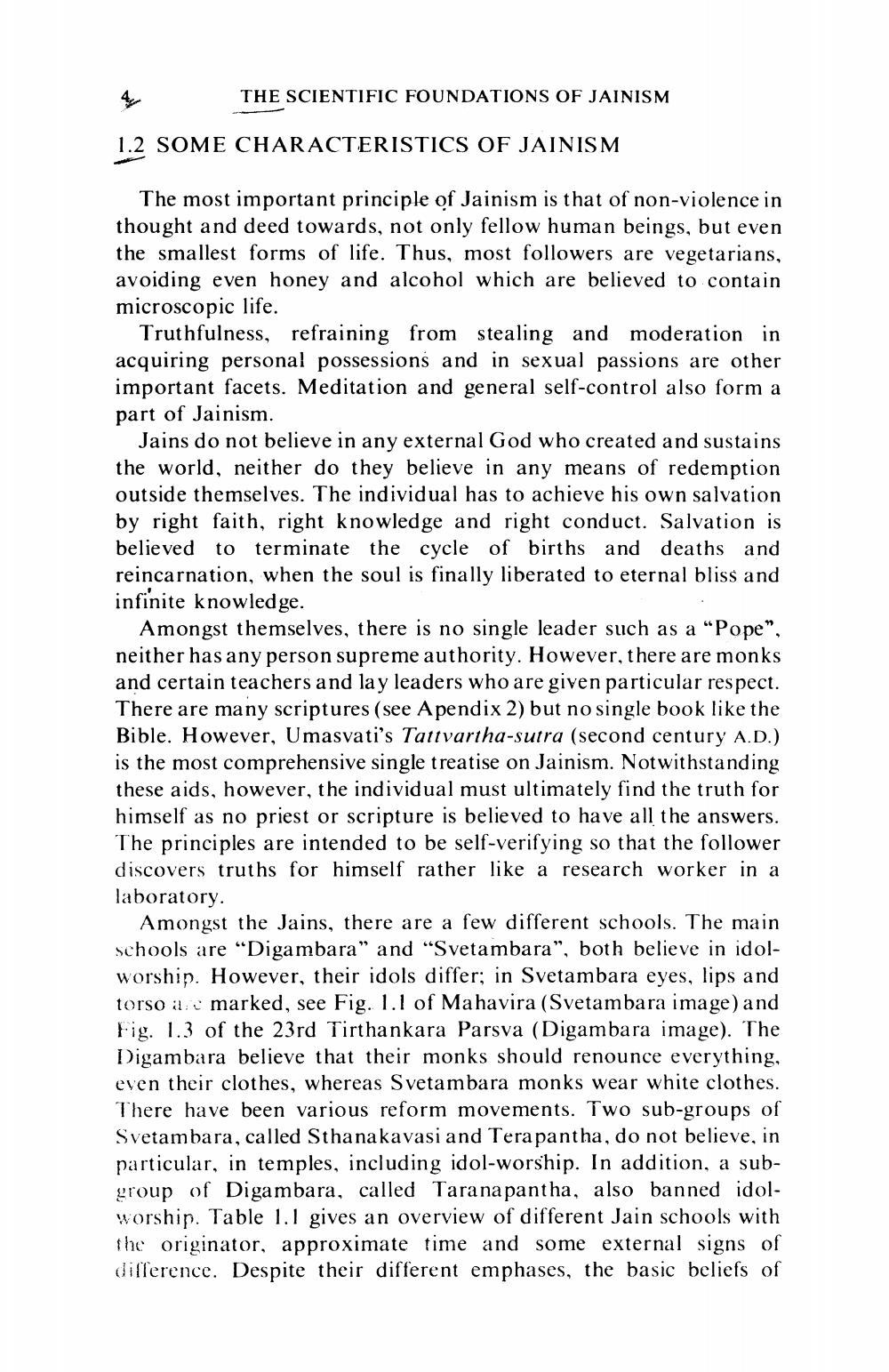________________
THE SCIENTIFIC FOUNDATIONS OF JAINISM
1.2 SOME CHARACTERISTICS OF JAINISM
The most important principle of Jainism is that of non-violence in thought and deed towards, not only fellow human beings, but even the smallest forms of life. Thus, most followers are vegetarians, avoiding even honey and alcohol which are believed to contain microscopic life.
Truthfulness, refraining from stealing and moderation in acquiring personal possessions and in sexual passions are other important facets. Meditation and general self-control also form a part of Jainism.
Jains do not believe in any external God who created and sustains the world, neither do they believe in any means of redemption outside themselves. The individual has to achieve his own salvation by right faith, right knowledge and right conduct. Salvation is believed to terminate the cycle of births and deaths and reincarnation, when the soul is finally liberated to eternal bliss and infinite knowledge.
Amongst themselves, there is no single leader such as a “Pope”, neither has any person supreme authority. However, there are monks and certain teachers and lay leaders who are given particular respect. There are many scriptures (see Apendix 2) but no single book like the Bible. However, Umasvati's Tattvartha-sutra (second century A.D.) is the most comprehensive single treatise on Jainism. Notwithstanding these aids, however, the individual must ultimately find the truth for himself as no priest or scripture is believed to have all the answers. The principles are intended to be self-verifying so that the follower discovers truths for himself rather like a research worker in a laboratory.
Amongst the Jains, there are a few different schools. The main schools are “Digambara" and "Svetambara”, both believe in idolworship. However, their idols differ; in Svetambara eyes, lips and torso a marked, see Fig. 1.1 of Mahavira (Svetambara image) and Fig. 1.3 of the 23rd Tirthankara Parsva (Digambara image). The Digambara believe that their monks should renounce everything, even their clothes, whereas Svetambara monks wear white clothes. There have been various reform movements. Two sub-groups of Svetambara, called Sthana kavasi and Terapantha, do not believe, in particular, in temples, including idol-worship. In addition, a subgroup of Digambara, called Tarana pantha, also banned idolworship. Table 1.1 gives an overview of different Jain schools with the originator, approximate time and some external signs of difference. Despite their different emphases, the basic beliefs of




